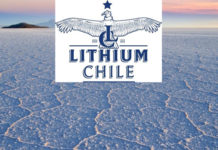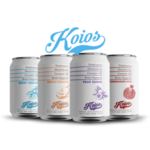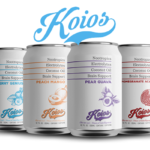Diabetes Mellitus is a disease that results in high blood sugar levels over a prolonged period of time. If left untreated, diabetes can lead to long term complications including heart disease, stroke, and in the worst cases, chronic kidney disease.
Chronic kidney disease is a potentially life-threatening condition where the kidneys are damaged to the point that they cannot filter blood normally. An estimated 10% of adults in the United States have chronic kidney disease, in varying levels of seriousness. In the most extreme cases, chronic kidney disease may proceed to end-stage renal failure, resulting in death.
In healthy individuals, the kidneys play a number of vital roles, including urine production, water retention and toxin filtration.
The kidneys play such a vital role in the excretory system, that if they are damaged or malfunctioning, the body will begin to accumulate harmful substances. This is a major concern among diabetics.
Although most diabetics aren’t so severely impacted as to have immunodeficiency, older diabetics may see their condition progress to chronic kidney disease, which can lead to renal failure. In these patients, the immune system is compromised and dialysis (filtering the blood through a machine) may be necessary. If the disease progresses to end-stage renal failure, immunosuppression is virtually guaranteed. Chronic kidney disease is in many cases not reversible. Curing the disease usually requires a kidney transplant, and there are not always enough donors available for that to be an option.
There are 5 stages of chronic kidney disease, with 1 being the mildest and 5 being the most severe. The fifth stage is known as end-stage renal failure, a condition that is not curable without a kidney transplant.
The number of end-stage renal failure patients has increased from 10,000 in 1973, to 661,648 as of 2013. There are now 21,000 new cases of end-stage renal failure each year. This means there are now more new cases annually, than there were total cases in 1973.
Many renal failure patients need to take immunosuppressive treatments, which lower their immune response, increasing susceptibility to infection. As a result, if a patient with end-stage renal disease is infected with hepatitis B virus, their odds of developing chronic hepatitis jump to around 30-60%.
Vaccination is one of the most crucial precautions to limit the spread of hepatitis among end-stage renal disease patients. Unfortunately, current vaccination options have limited seroprotection (immune response from the body).
Patients with end-stage renal disease have a poor response to conventional hepatitis B vaccination, mainly due to lower seroprotection. The kidneys play a vital role in fighting infection, and in kidney disease patients, the kidneys are weakened or (in the worst cases) totally non-functional. Therefore, these patients have a much weaker “will” to fight infections.
The severity of renal failure determines the proper course of action. Patients with more severe renal failure have a worse response to treatment. In studies using second-generation vaccines, it was shown that in moderate cases of kidney failure, seroprotection dropped to between 66% and 77%. In severe cases, the response rate was even further reduced.
Worse still, the current generation hepatitis B vaccines have extremely low response rate with older patients. In a meta-analysis of 17 clinical studies (including 1800 patients in total), there was a much reduced response to the vaccine in patients 70 years or older. While the vaccine is about 90% effective in younger patients (those vaccinated while still infants), that number drops to 40% in patients over 70.
Clearly, there is a pressing need for a more immunogenic hepatitis B vaccine. Such a vaccine would provide significant benefits to diabetics, the elderly, and other individuals whose immune systems are compromised thanks to renal disease.
But so far, such a vaccine has proven hard to find.
Hepatitis B vaccines have a long history. The first generation was developed in the 1970s, and was derived from the purified blood of hepatitis B sufferers. This generation of vaccines was considered dangerous, because the source (blood) was thought to put patients at risk for other diseases.
The second generation of hepatitis B vaccines was a major improvement on this front. Derived from wheat, they removed any and all risks associated with blood-source hepatitis B vaccines. This is the prophylactic that is used to this day.
But now, there are calls for a new generation of hepatitis B vaccines. Although second generation vaccines were a major improvement in terms of safety, they still shared one flaw with first-generation vaccines: incomplete antigen action.
An antigen is a molecule that triggers an immune response. Vaccines work by targeting the harmless “surface” antigens of viruses. These antigens have no viral DNA, but mimic the structure of viruses that do, so they can “train” the body to “fight” these viruses without having to catch them first.
Hepatitis B has three antigens, or molecules that produce an immune response: S, pre-S1, and pre-S2. Current vaccines only target the S antigen. It is thought that this incomplete antigen targeting may be responsible for lower seroprotection in elderly individuals and diabetics. As we age, or if we acquire kidney disease, our immune system is compromised. As a consequence, we lose the ability to fight diseases as we get older (or diabetic).
A vaccine that targets all three hepatitis B surface antigens may have a higher response rate, especially among elderly or diabetic patients. In most cases, patients with kidney disease do not have totally non-functional immune systems. Their immune systems are simply weakened. As a result, it is possible that a vaccine targeting more antigens will give the body a “fighting chance” to develop immunity.
One company pursuing research in this area is VBI Vaccines (NASDAQ:VBIV). VBI is a leading biosciences company producing medications for hepatitis B, cytomegalovirus (CMV) and glioblastoma multiforme (GBM). Its lead portfolio asset is Sci-B-Vac, a third-generation hepatitis B vaccine targeting all three surface antigens of the virus.
The core of the company’s capabilities in this space is what’s called the eVLP platform technology, developed by VBI and used to create a number of the company’s lead development assets. The eVLP platform uses an enveloped “e” particle that has a similar structure to the target virus (minus the harmful DNA), allowing it to elicit a powerful immune response.
Sci-B-Vac is currently approved for use in Israel and 14 other countries. The company has already completed two rounds of successful clinical trials for the product. Now, it is aiming to get approval in the U.S., the EU, and Canada with its Phase III clinical trials.
The company has already seen positive responses from Health Canada, the European Medical Agency, and the U.S. Food and Drug Administration (FDA). Should this third round of testing prove successful, it may be the final step the company needs to get its products widely adopted across North America and the EU.
VBI Vaccines trades on NASDAQ under the ticker symbol VBIV. The company is headquartered in Cambridge, MA, with significant research operations in Canada and Israel.
The author of this piece owns no shares in VBIV and has no plans to initiate any in the next 72 hours.












